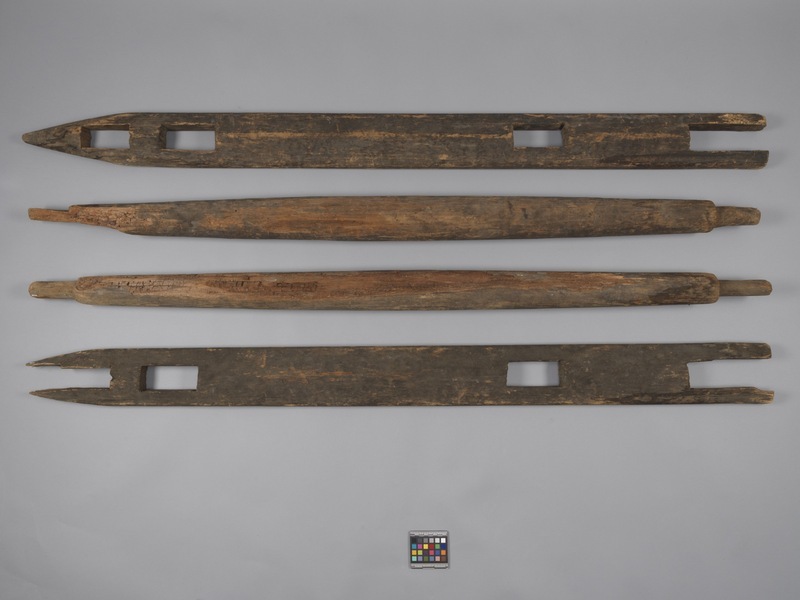Loom Item Number: 3298/1 a-d from the MOA: University of British Columbia

Description
Blanket loom composed of four wooden parts. Two upright frame pieces (parts a-b) are relatively flat in profile, with three rectangular matching cutouts for the rollers, and the top of each tapering to a point. Two rollers (parts c-d) are cylindrical with thin cylindrical ends which insert into the cutouts in the frame.
History Of Use
Loom for weaving wool robes and blankets. Traditionally, mountain goat wool blankets were worn as robes or used as bedding. The blankets were objects of status and used to compensate shamans or other specialists for their services. They were also distributed to those who witnessed weddings, naming ceremonies, and memorial rituals. The dead of wealthy families were wrapped in blankets. By the 1850s, Hudson's Bay (Company) point blankets, and other trade blankets were beginning to replace locally woven blankets.
Cultural Context
weaving; textiles
Narrative
Acquired by the donor from an antiques shop on Vancouver Island, near Duncan. Said to have been left under a house where a First Nations family had previously lived.
Item History
- Made in Vancouver Island, British Columbia, Canada
- Owned by Fraser Ross Sharp before April 25, 2018
- Received from Fraser Ross Sharp (Donor) on April 25, 2018
What
Who
- Culture
- Coast Salish
- Previous Owner
- Fraser Ross Sharp
- Received from
- Fraser Ross Sharp (Donor)
Where
- Holding Institution
- MOA: University of British Columbia
- Made in
- Vancouver Island, British Columbia, Canada
When
- Ownership Date
- before April 25, 2018
- Acquisition Date
- on April 25, 2018
Other
- Condition
- poor
- Accession Number
- 3298/0001 a-d